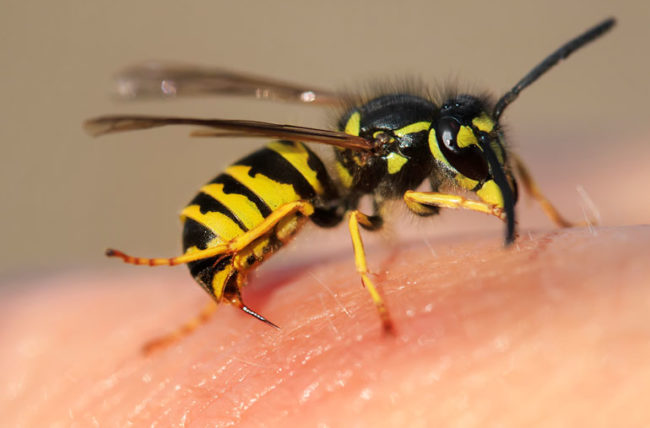Bees Control

In Melbourne, bees swarming & being on the move is a common occurrence during the warmer months.
Bees that are usually encountered in Melbourne belong to swarms or established colonies in buildings and surrounding structures, they present a significant risk to people and pets through painful and/or potentially life threatening stings caused by attacks.
Common situations in which bees can become a significant pest or threat if left unattended include:
- Swarms are often encountered in a mass which could be numbered in the thousands of bees either settled in a bush, tree and in a wall of a building or structure. Potentially extremely dangerous when disturbed or interfered with.
- An established Nest or Colony are often found inside a wall, vent, chimney or other sheltered environments and can be identified by a constant “stream” of bees going in and out from the specific entry point. It is potentially very dangerous if disturbed.
- Scout Bees are persistent bees that are effectively “reconnaissance bees” for the main colony or swarm that look around for suitable locations to establish new colonies. Moderately dangerous, especially “lost” bees that penetrate inside a home, and although almost dead, can still inflict a full and potent sting.
- Return Bees belong to an old or established nest that is eliminated but the entry holes were not blocked up, or the honey and comb were not removed, then hungry “Return Bees” will systematically remove any leftover or residual honey from what is left over from the nest. These bees are only moderately dangerous and will only appear randomly and inconsistently.
Overall, bees can be quite dangerous to both people and pets.
Wasps Control
The most commonly found wasp in Melbourne is the European Wasp. These aggressively natured wasps are an introduced pest and can be difficult and dangerous to eliminate. In many cases a wasp nest can contain tens of thousands of the deadly insects. They often conceal their nests within wall voids and roof spaces of homes in Melbourne. They are difficult to locate and often not detected until the nest is near maximum size. In all cases with the European Wasp, the nest must be exterminated by direct treatment to eliminate the risk of attack to humans and pets a like.

Other reasons to address wasp problems are that they are capable of significant property damage. The four most common situations that wasps are encountered in and present the greatest risk are:
- Nests established in walls or roof voids of houses and entering via holes and gaps, present a number of unexpected and unwelcome problems from continual presence of stray or lost wasps inside the house, to increased numbers of wasps immediately in outdoor living areas, making tasks difficult and compromised, such as working in the garden, having a BBQ or children playing.
- Nests established in gardens, retaining walls, piles of firewood and various outdoor areas also present a significant risk, especially for children or pets that either inadvertently discover them by stepping on, or near the nest entry, or by innocently interfering with the nest out of curiosity and unfamiliarity with the potential consequences. Another way to identify wasps is when you see them in a constant and steady flight path from a mass of grey material similar to paper mache which is their nest. This nest may often be attached to a wall or tree or other structures.
- When wasps are inside the home or building in large numbers and gathering against windows this is likely to indicate a ‘break through’ of the wasp nest as they eat through the plasterboard adjacent to the nest.
- Wasps are potentially incredibly dangerous and the ‘do it yourself’ treatments in any form are not recommended due to the level of risk involved and the importance of the correct identification of species and therefore the appropriate treatment then being applied.
